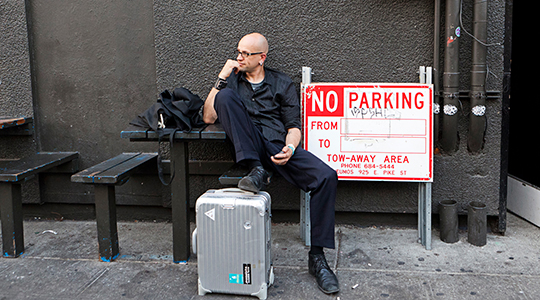Robert Henke
[DE]

Robert Henke is a pioneering electronic artist, known for his works as Monolake and his key contributions to the development of digital audio workstation Ableton Live. At CTM 2020, Henke will be presenting a new audiovisual piece entitled "CBM 8032 AV," inspired by and performed on restored Commodore 8032 computers.
Along with Gerhard Behles, Robert Henke has been a key figure in electro-acoustic composition since the mid-1990s as part of Monolake. Furthermore, he has left an indelible mark on music making globally as the co-creator of Ableton Live, first released in 1999. He has since worked with internationally renowned festivals, maker labs, and academic organisations, lecturing on the creative use of computers in music and audiovisual arts.
"CBM 8032 AV" explores the ambivalence between contemporary aesthetic and the usage of obsolete and limited technology from 40 years ago. Everything presented within the project could have been achieved already in the 1980s, but needed the cultural backdrop of 2019 for artistic ideas to drive it. The stage is adorned with five identical Commodore computers running custom software developed by Henke and a team of thirteen artists and engineers. Whereas once the glow of the green cathode ray represented endless possibilities of the digital age, the machines’ monochromatic nostalgia along with its 1bit sound output pose interesting limitations for contemporary artists used to high-speed computation.
Robert Henke’s inspiration from the personal computers originates when he was a teenager in the 1980s—the first computer he used was a junior version of the CBM 8032 which could still be directly programmed, unlike with contemporary operating systems. Whereas Henke’s development of Ableton Live brought countless musicians unimaginable control in electronic music production and performance, the artist’s curiosity in unique audio and visual qualities drew him towards working with the CBM 8032 that have since become outmoded. “Monochrome CRT displays are amazing, and we lost that specific quality on our modern retina displays. This project has many details and properties which makes it unique, simply because its inherent structure only allows for doing things in a certain way, or produces a specific aesthetics from within...The role of the artist is to embrace this and to interact with it.”


